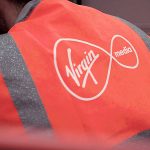Mayor to Spread Full Fibre Over London by Going Down the Tube
The Mayor of London UK, Sadiq Khan, has today announced a new £10m project that aims to boost “full fibre” broadband coverage in the city by running optical fibre cables using the Tube network and public buildings. The work is considered to be the “first step” in their effort to “support faster connectivity for 400,000 homes.”
At present around 97% of premises in London can already access a “superfast broadband” (24Mbps+) network, which mostly stems from Openreach’s (BT) FTTC (VDSL2) technology and Virgin Media’s soon to be Gigabit-capable cable network. On top of that around 70% of premises in London can also access “ultrafast” (100Mbps+) speeds; mostly as a result of Virgin.
Meanwhile the new generation of gigabit-capable (1Gbps+) “full fibre” networks are currently only available to around 13% of premises (Thinkbroadband), which is currently being delivered via a mix of operators such as Openreach, Hyperoptic, Virgin Media and Community Fibre etc.
Advertisement
In an effort to boost this the Mayor now hopes to make it possible for more of London to access gigabit-speed connectivity – starting with 118,000 properties in south London – by tackling “not spot” areas which suffer from poor connectivity.
According to the blurb, “new fibre optic cabling will be laid along TfL tunnels to create a ‘fibre backbone’ across London… [this] will cover the installation costs of linking these fibre optic cables to public buildings, such as community centres and libraries.” The hope is that this will in turn “reduce the cost to providers of laying cabling between the public buildings and Londoners’ homes and businesses.”
Sadiq Khan, Mayor of London, said:
“London’s future digital connectivity will be built on fibre. High-speed connectivity is crucial for businesses of all sizes and sectors, not to mention Londoners accessing digital services at home and around the city.
This represents the largest investment in connectivity City Hall has ever made – the funding I’m announcing today unlocks the potential for us to use the Tube network and public buildings in bringing gigabit-speed connectivity to Londoners currently putting up with poor service.
I hope this provides the catalyst for further investment from the public and private sectors – I’m urging them to match my ambitions to get all Londoners connected.”
On the surface this sounds like wonderful news, although sadly no targets (timescales) or specific rollout plans are given for achieving the stated coverage. Indeed it’s unclear from the press release if this measure will directly result in the additional connection of 400,000 more homes to faster broadband (i.e. the figure sounds like more of an aspiration than a solid commitment).
Certainly running optical fibre down the tube may help in some areas, although there’s already a mass of core fibre running along streets above the tube. The challenge is often in the disruptive and costly street works, permits and wayleaves needed to reach and access poorly served buildings aboveground over the last stretches (the tube network isn’t dense enough to solve all of that).
Advertisement
Likewise the announcement contains no information about which ISPs, if any, have agreed to invest in order to extend out from this new backbone to connect poorly served homes (i.e. it’s unclear if they intend to conduct a future procurement or adopt a passive “build it and they will come” mentality). Such information is crucial since you need more than just an extra fibre backbone to solve the city’s wider problems.
Secured from City Hall’s Strategic Investment Fund (SIF), this latest funding joins other investment of £15.4m from London Councils for west and north London, and £8.5m for central London from the Department for Digital, Culture Media & Sport (DCMS / LFFN). An additional £1m is also being allocated by the Mayor to drive future investment from the public and private sectors, in light of the significant need for further funding.
UPDATE 25th October 2019 – 11:48am
London ISP Community Fibre has given us a useful comment on the development.
Advertisement
Graeme Oxby, CEO of Community Fibre, told ISPreview.co.uk:
“The news that Sadiq Khan has pledged to accelerate the roll out of a full-fibre network for London using the Tube network will be welcomed by every Londoner. London has long been behind the top global cities when it comes to digital connectivity, and it is good to see policy makers turning words into actions.
We’re delighted to hear the Mayor using terms like ‘full fibre’: full fibre connections are vital in providing truly future-proofed, fast and reliable internet connectivity. This is hopefully the first step in getting London ready for the smart technology of the future.
The challenge now will be whether the Mayor and local authorities choose the right infrastructure partners to bring their network to homes and businesses, and – most importantly, whether it can be done at prices that are fair, and at speeds that are in line with our ambitions as a truly global city. No-one should be left behind because of price/affordability.”
Mark is a professional technology writer, IT consultant and computer engineer from Dorset (England), he also founded ISPreview in 1999 and enjoys analysing the latest telecoms and broadband developments. Find me on X (Twitter), Mastodon, Facebook, BlueSky, Threads.net and Linkedin.
« £3m Reinvestment to Extend Openreach FTTP Over Highlands

















































Comments are closed